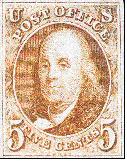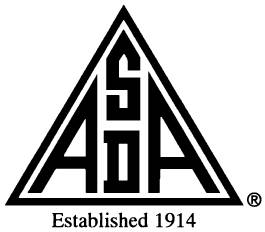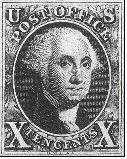

Scott A. Shaulis
Quality US stamps at competitive prices
P.O. Box 549
Murrysville, PA 15668
724-733-4134


 |  | Scott A. Shaulis Quality US stamps at competitive prices P.O. Box 549 Murrysville, PA 15668 724-733-4134 |  |  |
|
Frequently Asked Questions Q: How do I contact you? A: I can be contacted several ways. You can reach me by regular mail at: P.O. Box 549, Murrysville, PA 15668. You can also send me an email at scott@shaulisstamps.com. Or I can be reached by phone at 724-733-4134. Q: What’s all of this XF, VF, F notation? A: Stamps made today are manufactured under a very complex process that assures a high quality product. Years ago, that wasn’t the case and stamps come in varying degrees of centering. XF (extremely fine) means that the stamp is extremely well centered and that the margins are uniform on all sides. VF (very fine) means that the stamp is well centered, but it may be very slightly off center. F (fine) means that the stamp is off center, but the design is clear of the perforations or the design just touches the perforations. AVE (average) means that the stamp is off center and typically one or more sides of the stamp design are cut into by the perforations. Q: What stamps should I invest in so that I can make money? A: Investing in anything takes a lot of time and knowledge to determine what may be a good investment. Stamps are no different. There is no silver bullet for investing in stamps. There are some general categories of stamps which have done well over time. But these stamps often cost hundreds or thousands of dollars in today's money. For most collectors, the “investment” should be the fun gained through the hobby. Q: I should completely avoid hinged stamps. Correct? A: Not necessarily. Up until about the 1930s or 1940s, most stamp collectors hinged their stamps because that was the commonly accepted practice. Stamp collectors back then were not concerned as much with gum and hinge marks. If you check the Scott US Specialized catalog, you’ll notice that prices are listed for both hinged and unhinged copies of many of the early US stamps. In fact, many of the MNH copies of older stamps came from the once acceptable practice of breaking down blocks of stamps into one or two hinged copies and the rest being MNH. Unfortunately, that practice caused some nice blocks of early stamps to be lost to today's collectors and breaking down blocks is not regularly practiced today. US stamps from post-1940 are generally collected MNH and that’s how they are cataloged. Hinged stamps are fine for your collection if you wish to collect them that way. Just make sure that you are paying the appropriate price for a hinged copy and not the price for a MNH copy. Q: I see a lot of stamps offered for sale on eBay. Why should I consider buying stamps from you or any other stamp dealer? A: I’ve used eBay myself for some smaller purchases. And I am careful of whom I buy from. But overall, I’d say there are three problems with eBay. First, there is an awful lot of “clutter” offered by non-collectors who are not knowledgeable about prices. This makes it much harder to find a particular item. Second, stamps are not listed in order by catalog number. This too makes it hard to find particular items. Third, eBay has no return policy. Some sellers will offer a return policy and they state that in their auction listing. However, if you buy from eBay and the item is not as it was described (e.g., a badly thinned copy), you may find that you’re stuck with an item you grossly overpaid for. eBay has been used successfully by many people, but it does have it’s warts too. Caveat emptor! Q: What kind of album should I use to collect stamps? A: Whatever kind of album you like best. There are commercially produced albums which range from very cheap to quite expensive. If you are going to use a commercially produced album, find one that matches your budget and matches your taste in appearance. Some collectors make their own albums on a computer using regular bond paper. There is software available to help you create album pages. And some collectors make up their own album pages by hand. The important thing is to collect stamps in the way that you want to. Don’t feel the need to conform and collect stamps the way everyone else does. Do what is right for you. Just make sure that you avoid using methods which can lead to damaged stamps. These are things like scotch tape, photo albums, or scrap books. These items typically have a high acid content and over time, they will damage your stamps. Q: What stamps should I collect? A: Whatever you like to collect and whatever fits in your budget. There are literally thousands of different ways to collect stamps. The main point is to collect for fun and enjoy your stamps. Here are a few ways that some collectors save stamps:
Q: Buying damaged or badly centered stamps is a bad idea. Correct? A: Not always. If you subscribe to that philosophy, then you would never own the British Guiana 1¢ Magenta, one of the worlds rarest stamps. Its corners are trimmed off. Hence it is a damaged stamp, but it still a world class rarity and worth a lot of money. There is nothing wrong with owning damaged stamps as long as they are priced appropriately and accurately described. Generally speaking, damaged copies of stamps are worth much less, especially when undamaged copies of the same stamp also exist. If your budget can’t afford an undamaged copy, a damaged copy may be a nice compromise. Some damage is much less noticeable (tiny thin, a few missing perforations, a minor crease, etc). In these cases, you can still add very attractive looking stamps to your collection at a fraction of the cost of undamaged copies. Some damaged items are much more obvious (heavy stains, missing pieces of the stamp, major tears, etc) and typically sell for a fraction of catalog value. Q: Why are different examples of the same stamp priced differently? A: First of all, make sure that the stamps you are comparing are the same, either mint or used. Assuming they are the same, the price difference is most likely due to condition and/or centering. Stamps which are described as having XF or Superb centering usually bring near full catalog value and frequently sell for more than full catalog price. Stamps in this condition are not common and they are highly sought after. Stamps that exhibit AVE centering sell for much less because one or more parts of the stamp design are often cut off by the perforations (or on early imperforate stamps, parts of the stamp design are missing because of how the stamp was cut apart from the pane of stamps). Condition is also a factor in setting a value. Damaged stamps (thins, missing perforations, stains, tears, etc) sell for much less than undamaged copies. Generally speaking, the better the condition of the stamp and the better the centering, the higher the price that it will sell for. In the case of used stamps, the heavier the cancel, the less a stamp may sell for. A stamp with a very heavy cancel that obscures much of the design is considered less desirable than a stamp that has a very light cancel. In some cases, the stamp may have what’s called a fancy cancel (like a cancel in the shape of an object such as a shoe or it may have a fancy geometric design). Fancy cancels are quite collectible and some examples are highly sought and bring substantial premiums over an ordinary cancel on the same stamp. Therefore, two stamps which may appear to be the same may sell for very different prices. Q: Should I buy sheets of new stamps from the post office? Someone told me they are a good investment if I hold onto them for a few years. A: If it is your desire to collect full sheets of new issues from the post office, that is certainly your prerogative. However, time has shown that investing in mint sheets of stamps bought from the post office is not a good investment. Almost all of the stamps issued since 1940 sell for at face value and often below face value when sold in large quantities to dealers. The reason is because these stamps are printed in the millions and they are very common. Most stamp collectors don’t need them. Hence, the supply is huge and the demand is very low. Q: I have a (fill in the blank) that is very rare because only a few exist. Because it is rare, it should be worth a lot of money. Correct? A: In stamps, demand is more important than supply. For example, there are 100 copies known of Scott #C3a, the famous Jenny Invert. Most stamp collectors are familiar with this stamp. This stamp catalogs at $175,000. There are other stamps which have fewer known copies in existence. However, these stamps sell for hundreds or only a few thousand dollars. Rarity alone does not make an item worth a lot of money. Demand is more important than supply. |
Q: Do you adjust your prices at all?
A: In general, no. If there is an error in the listing, of course a price adjustment is in order. I strive to maintain low prices already to remain competitive against other dealers offering US stamps. No dealer can guarantee to have the lowest price on every stamp, every time. As Pat Herst and other respectable dealers have pointed out in various books about the stamp business, if a dealer spends all of their time adjusting prices for each customer, pretty soon they will find that they have no time left to add new stock, prepare advertising, and many other activities that go into making a stamp business. I spend much of my time filling orders and keep my stock fresh so that you can find items you need.
Q: What about eBay? I see lots of great stamps listed on there at bargain prices compared to your prices.
A: eBay is an online auction and a very different vehicle for stamp sales. To be honest, I buy some stamps on eBay, but I'm very careful about what I buy and I'm very selective about who I buy from. I also sell some items on eBay. There are about 150,000 new stamp auctions per day on eBay. The vast majority of sellers on eBay are honest individuals. Several reputable stamp dealers (myself included) sell on eBay. However, like any business, there are a few bad apples. I see several lots every day that are either misidentified (usually the wrong Scott catalog number) or wrongly described (e.g., items described as Gem quality which would barely pass for Fine condition according to Scott grading guidelines). My personal favorite is an item description that begins with something like, "I don't know much about stamps, but ..." Frequently, these listings are the most trouble. Another problem with eBay is that many sellers only show the front of the stamps. What about thins and other damage that isn't always evident from the front of a stamp? Can you find stamps on eBay cheaper than from a regular stamp dealer? Possibly. But traditional stamp dealers offer things that you don't typically get with an eBay sale such as a return policy on purchases, guaranteed stamps, etc. Whether it's eBay or any other sale, there is no free lunch. If you think you're buying a stamp for pennies on the dollar compared to its real worth, chances are there is something wrong with the sale and you may be the one left holding a worthless item. eBay is wonderful, but it does have its warts. Use it wisely to add to your collection.
Q: What are those APS and ASDA logos I see on your website?
A: The American Philatelic Society (APS) and the American Stamp Dealers Association (ASDA), both offer a code of conduct for their stamp dealer members. Both organizations also offer dispute resolution services for their dealer members. The APS and ASDA work hard to insure that their members uphold the highest integrity in the stamp business and have taken action, when appropriate, to discipline and even expel members. Many dealers belong to one or both organizations. Their logos are a symbol that this dealer has subscribed to their code of ethics. Their members are considered to be the most trustworthy dealers in the business.